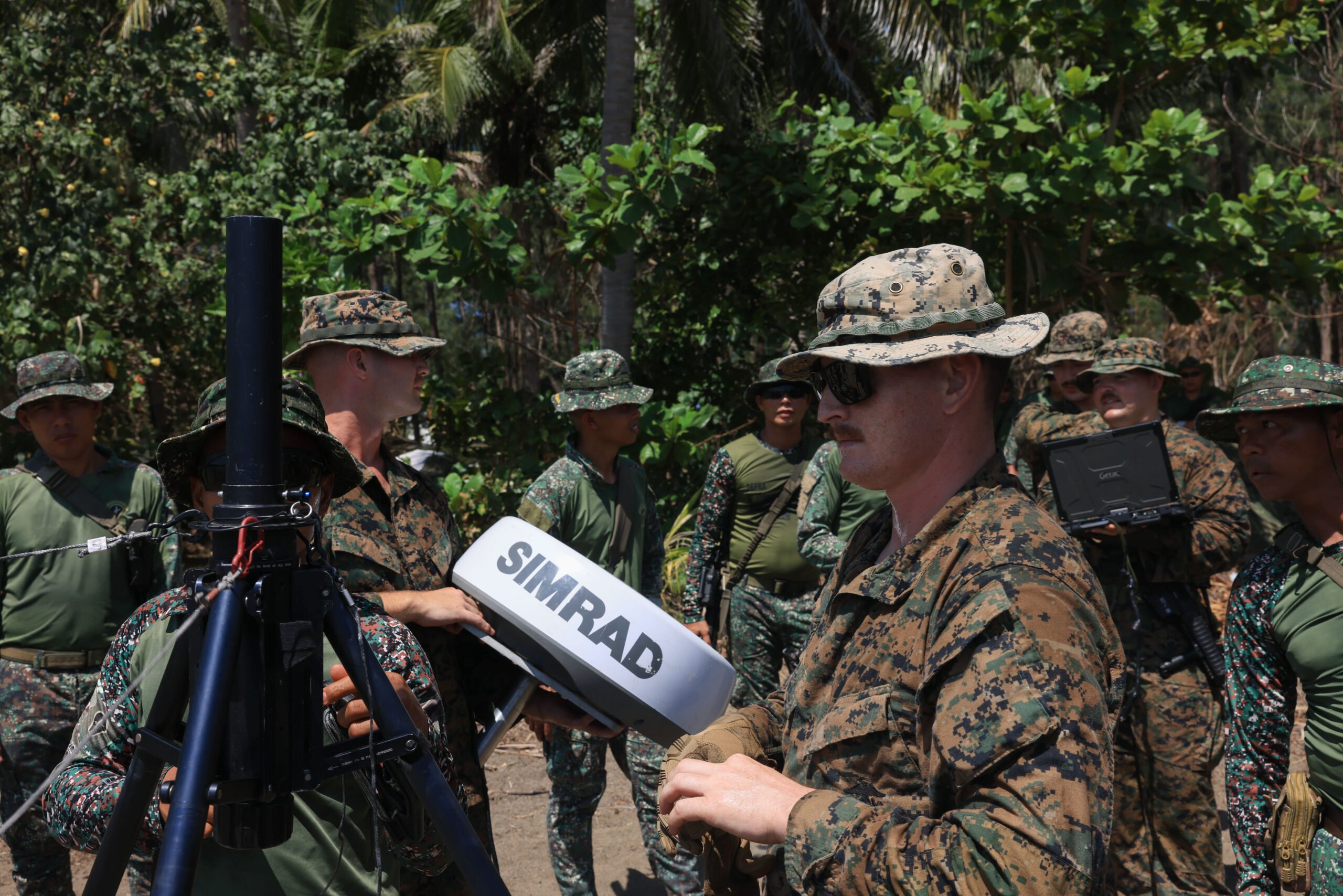
U.S. and Philippine forces tested their ability to secure a strategic island group only 125 miles away from Taiwan during Balikatan 2024.
A combined Marine Corps and Army force, composed of a company from the Littoral Combat Team of the 3d Marine Littoral Regiment and elements from the 25th Infantry Division and the Philippines’ 4th Marine Brigade, deployed to the Province of Batanes in Manila’s largest annual military drills. The deployment to the region during Balikatan was under “a scenario designed to preserve and protect Philippine territorial integrity,” 1st Lt. Anne Pentaleri, 3rd MLR public affairs officer, told USNI News.
Despite being smaller in size compared to last year’s exercise by about 1,000 troops, this year’s iteration has drastically increased the scope and focus of the exercise to cover the Philippines’ outermost territories in the South China Sea and Luzon Strait, including islands in Batanes.
Located closer to Taipei than Manila, the islands of Batanes have received increased attention over the last few years amid growing cross-strait tensions and a renewed national security push by the Philippines following several incidents with China in the South China Sea.
While American forces have trained in the island chain, this year’s exercise expanded their presence throughout the province to include the northernmost point of the Philippines.
Mavulis, an uninhabited island with a Philippine Navy outpost located only 88 miles away from Taiwan, saw the deployment of U.S. Marines with maritime domain awareness sensors during the drills. Philippine military officials previously eyed the island as an exercise location for U.S. forces in January.
U.S. Marine Capt. Colin Kennard, another public affairs officer working on the exercise, confirmed to USNI News that this was the first deployment of 3rd MLR elements to the island.
In the exercise, combined littoral reconnaissance teams of U.S. and Philippine marines went to Mavulis and the neighboring islands of Itbayat and Batan to establish a maritime domain sensing network in a key training security operations event.
According to the Marine Corps, the LRT is “a low-signature, easily deployable team that uses multi-discipline sensors and collection sources for reconnaissance and counter-reconnaissance in the littoral zone.” The LRT contains existing components from across the littoral combat team’s intelligence section, such as the maritime surveillance and small unmanned aircraft systems teams, and combines them to “enhance 3d LCT’s capabilities in a way that better fits the requirements of stand-in force operations,” reads a service news release.

While the Marine Corps did not specify the equipment it used, a description of the LRT’s capabilities includes radars, drones, and artificial intelligence object recognition. Pentaleri explained that the deployment of these LRTs in Batanes would fulfill reconnaissance and counter-reconnaissance missions that “increase the commander’s battlespace awareness.”
On Basco, the largest island in Batanes, U.S. and Philippine Marines set up a forward fueling and rearming point in the province’s largest airfield. Other activities in the Luzon Strait occurred on islands closer to the Philippines, including an air assault operation by U.S., Australian, and Philippine troops. The Army’s 1st Multi-Domain Task Force, with transport from other services, also deployed High Mobility Artillery Rocket Systems in several rapid infiltration drills at a port and airfield in Northern Luzon.
The Philippines has stepped up the deployment of military forces, construction of infrastructure and drills in the region. In 2022, Manila redeployed the 4th Marine Brigade from the southern island of Sulu to Northern Luzon, giving it an area of responsibility that included the northernmost province. The following year saw some of the most intense military activities in Batanes to date, with the deployment of American troops, ships and rocket systems during Balikatan 2023. On Mavulis, the Philippine military recently constructed helipads and living improvements for its garrison on the island.
The 2024 iteration of the exercise comes amid Manila’s new defense plan. Dubbed the Comprehensive Archipelagic Defense Concept, the new strategy aims to expand the scope of the Philippines’ defensive posture to its exclusive economic zone and outermost territories, such as islands in the South China Sea or the Luzon Strait.
Kennard and Pentaleri highlighted Balikatan’s contribution to assisting the Armed Forces of the Philippines in developing its new concept, which they linked with the service’s ongoing Force Design effort.
“As we undergo force design modernization, the AFP is similarly implementing their Comprehensive Archipelagic Defense Concept. The co-development of littoral-focused training activities as part of Balikatan improves our combined capability to operate in and around key maritime terrain,” said Kennard.
He added that Balikatan’s training areas “provide the perfect terrain for the U.S. and Philippine Marine Corps’ to operate as a naval expeditionary force in the littorals.”





